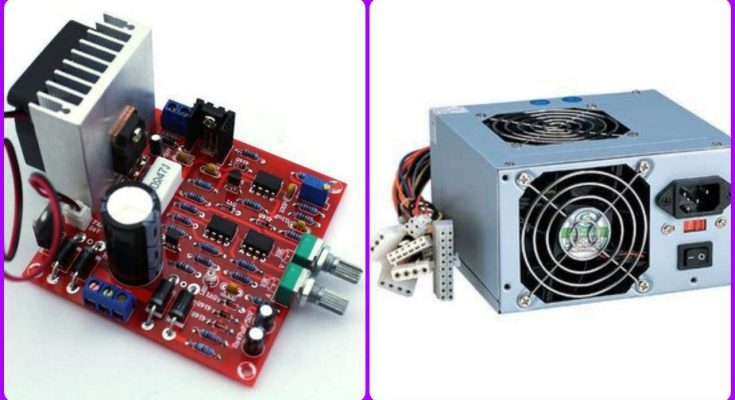A power supply is a crucial component in any electronic system, providing the necessary power for devices to function correctly. Whether you’re building a computer, setting up an audio system, or working with industrial equipment, understanding the basics of power supplies can help you choose the right one and ensure your devices operate safely and efficiently.
What is a Power Supply?
A power supply is a device that converts electrical energy from one form to another, typically from AC (alternating current) to DC (direct current). It regulates the voltage and current to the appropriate levels required by the electronic components it powers. Without a reliable power supply, electronic devices may fail to operate correctly or could be damaged due to unstable power delivery.
Types of Power Supplies
There are various types of power supplies, each designed for specific applications:
- Linear Power Supply:
- Operation: Converts high AC voltage to a lower DC voltage using a transformer and a rectifier.
- Advantages: Simple design, low noise.
- Disadvantages: Less efficient, bulky, generates more heat.
- Switching Power Supply:
- Operation: Uses high-frequency switching techniques to convert AC to DC efficiently.
- Advantages: Compact, lightweight, highly efficient.
- Disadvantages: More complex design, can produce electrical noise.
- Uninterruptible Power Supply (UPS):
- Operation: Provides backup power during an outage, using batteries or flywheels.
- Advantages: Protects against power interruptions, essential for critical systems.
- Disadvantages: Limited runtime, requires maintenance.
- Programmable Power Supply:
- Operation: Allows users to set and control voltage and current levels digitally.
- Advantages: Versatile, ideal for testing and development environments.
- Disadvantages: More expensive, requires technical knowledge.
Key Specifications to Consider
When selecting a power supply, several key specifications are critical to ensuring it meets your needs:
- Voltage Rating:
- Ensure the power supply provides the correct output voltage for your device. Too high or too low a voltage can cause malfunction or damage.
- Current Rating:
- The power supply should provide sufficient current to power all connected devices. Exceeding the current rating can lead to overheating or failure.
- Power Rating (Watts):
- Calculated by multiplying the output voltage by the output current (Watts = Volts × Amps). Ensure the power supply’s wattage meets or exceeds your device’s requirements.
- Efficiency:
- Higher efficiency means less energy is wasted as heat, making the power supply more cost-effective and environmentally friendly.
- Ripple and Noise:
- Low ripple and noise levels are essential for sensitive electronic devices, as high levels can cause interference and performance issues.
Safety and Reliability
Safety is paramount when dealing with power supplies. Consider the following to ensure reliable and safe operation:
- Overcurrent Protection (OCP Rock settings): Prevents the power supply from delivering excessive current, which can damage the device or cause overheating.
- Overvoltage Protection (OVP): Protects connected devices by shutting down the power supply if the output voltage exceeds a safe level.
- Overtemperature Protection (OTP): Shuts down the power supply if it overheats, preventing damage to both the supply and connected devices.
- Certifications: Look for power supplies with safety certifications (e.g., UL, CE, FCC) to ensure they meet industry standards for safety and performance.
Common Applications
Power supplies are used in various applications, including:
- Computers: Powering CPUs, GPUs, storage devices, and peripherals.
- Industrial Equipment: Running motors, sensors, and automation systems.
- Consumer Electronics: Charging devices, powering home appliances, and more.
- Telecommunications: Ensuring stable power for network equipment and communication devices.
- tLaboratories and Testing: Providing precise voltage and current control for experiments and testing procedures.
Tips for Choosing the Right Power Supply
- Understand Your Requirements: Determine the voltage, current, and power needs of your devices before selecting a power supply.
- Consider Future Expansion: Choose a power supply with a slightly higher wattage than currently needed to accommodate future upgrades or additional devices.
- Check Compatibility: Ensure the connectors and physical dimensions of the power supply match your device’s requirements.
- Prioritize Efficiency: Opt for a power supply with high efficiency to save on energy costs and reduce heat generation.
Conclusion
A power supply is the backbone of any electronic system, providing the necessary power to keep everything running smoothly. Understanding the different types of power supplies, their key specifications, and safety features will help you make an informed decision, ensuring your devices operate reliably and safely. Whether you’re a hobbyist, engineer, or consumer, knowing the basics of power supplies is essential for any project or application involving electronics.





